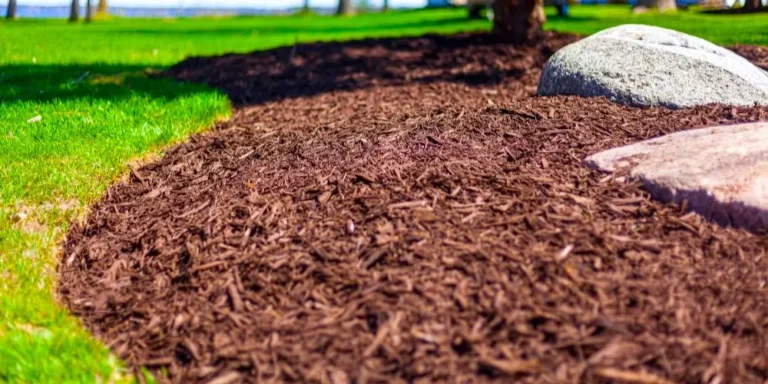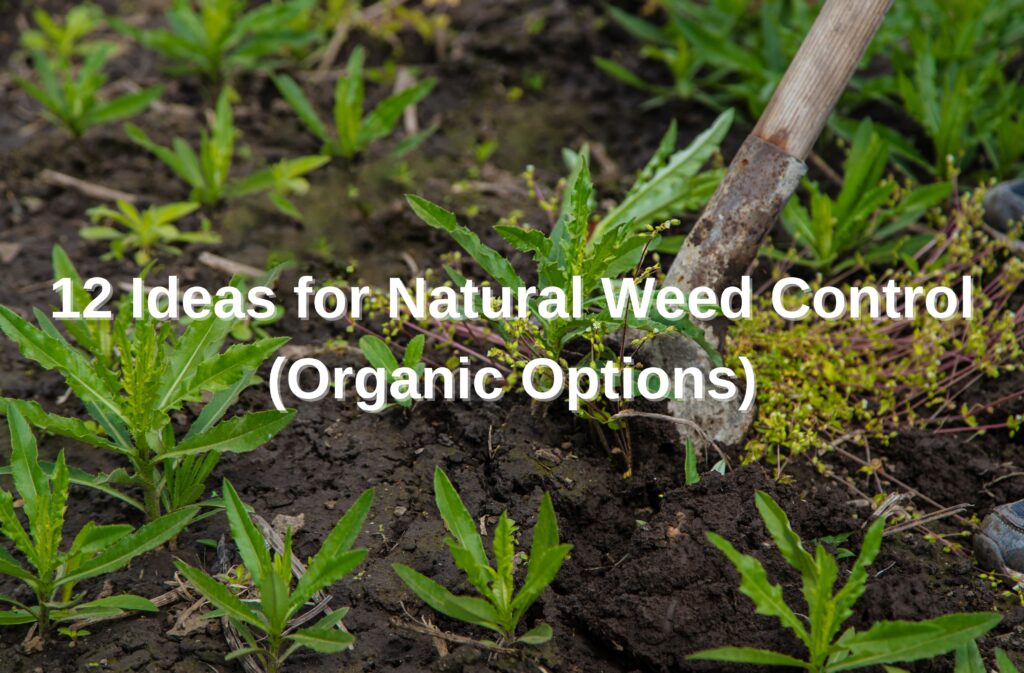Table of Contents
1. Mulching: Nature’s Blanket
Mulching is one of the most effective and eco-friendly ways to prevent weed growth. A thick layer of organic mulch blocks light from reaching weed seeds, effectively smothering them before they sprout. In addition, it helps the soil retain moisture, regulates temperature, and adds nutrients as it breaks down.
Types of organic mulch:
Straw (make sure it’s seed-free)
Pine needles
Shredded leaves
Grass clippings (dried)
Pro Tip: Reapply mulch yearly and maintain a 2–3 inch thickness for best results. Avoid piling mulch too close to plant stems or tree trunks to prevent rot and disease.

2. Hand Pulling: Simple and Effective
While it may not be glamorous, pulling weeds by hand is still one of the most thorough methods—especially when done correctly. By removing the entire root system, you stop the weed from growing back.
Best time to pull:
After rain or watering, when the soil is moist and soft
Before weeds flower and go to seed
Pro Tip: Invest in weeding tools like a hori-hori knife or dandelion puller to make the job easier and reduce strain on your hands.
While hand pulling is an effective natural method, it can be time-consuming and physically demanding—especially for larger spaces.
Curious whether it’s better to do it yourself or get help? Price Guide for Pulling Weeds: Average Costs in 2025 to explore what hiring a professional might cost.
3. Boiling Water: Instant Weed Killer
Boiling water scalds and kills the cells of plant leaves and roots, causing them to wilt and die within hours. This method is perfect for weeds growing in sidewalks, gravel paths, or driveway cracks.
Warning: This method is non-selective. Avoid using near flowers, vegetables, or grass.
Pro Tip: Use a kettle with a spout for better control and safety.
4. Vinegar-Based Herbicide: Natural and Powerful
Vinegar contains acetic acid, which draws moisture from the leaves, drying them out. Household vinegar works well on young, tender weeds, while horticultural vinegar (10–20% acetic acid) is stronger for more established plants.
DIY Natural Weed Spray:
1 gallon white vinegar
1 tbsp dish soap (helps the solution stick to leaves)
½ cup salt (optional, boosts potency but affects soil)
Pro Tip: Apply on dry, sunny days for maximum effectiveness. Repeat applications may be needed.
5. Cardboard & Newspaper: Weed Barrier That Decomposes
Layering cardboard or 5–10 sheets of newspaper over weedy soil smothers the plants beneath by blocking light and oxygen. Top with mulch to hold it in place and improve the look.
Where to use:
Under new garden beds
In raised beds or around shrubs and trees
In walkways or between rows
Bonus: As the cardboard breaks down, it improves soil structure and adds organic matter. Similar to smothering with cardboard or newspaper, landscape fabric offers a longer-lasting weed barrier option. Find step-by-step instructions here: How to Install Landscape Fabric for Weed Control
6. Corn Gluten Meal: Preventative Natural Herbicide
Corn gluten meal is a byproduct of corn processing and works as a pre-emergent herbicide, meaning it prevents seeds from germinating—ideal for controlling weed seedlings.
Apply in early spring for crabgrass, dandelions, and other common weeds.
Note: Don’t apply before planting seeds, as it will prevent all germination—including veggies and flowers.
7. Flame Weeding: Burn Weeds Without Chemicals
Flame weeding uses a propane torch to expose weeds to high heat, bursting plant cells and killing them. It’s fast, satisfying, and great for hard-to-weed areas.
Best used on:
Gravel paths
Garden edges
Between patio pavers
Use with caution: Always keep a water source nearby, and avoid during dry or windy conditions.
8. Close Spacing & Companion Planting
Crowding out weeds by minimizing bare soil is a natural way to reduce weed pressure. Plant vegetables and flowers closer together, and use fast-growing ground covers to shade the soil.
Great companion plants:
Clover (fixes nitrogen and prevents weeds)
Thyme, oregano (low-growing and dense)
Marigolds (repel pests and cover soil)
Pro Tip: Use square-foot gardening methods or plant cover crops in fall to prevent winter weed germination.
9. Soil Solarization: Harness the Sun
Soil solarization is a technique that uses sunlight to kill weed seeds, pathogens, and pests in the soil. It’s highly effective in sunny, warm climates.
How to do it:
Moisten soil and remove large debris
Cover with clear plastic sheeting
Seal edges with soil or bricks
Leave in place for 4–8 weeks
Best time: Late spring to mid-summer when temperatures are highest.
10. Cover Crops: Weed Suppression + Soil Health
Planting cover crops in off-seasons keeps the soil active and weed-free. These crops outcompete weeds for nutrients and space and add organic matter when tilled under.
Common cover crops:
Buckwheat (fast-growing and weed-suppressing)
Winter rye
Clover or vetch (also fix nitrogen)
Pro Tip: Use in vegetable gardens during fall and winter to suppress spring weeds.
11. Natural Essential Oils
Certain plant-based essential oils have herbicidal properties. Oils like clove, cinnamon, or citrus (d-limonene) can damage weed leaf tissue and cause die-off.
Natural spray:
Mix essential oil with water and a little dish soap
Apply directly to weed foliage
Pro Tip: Test on small patches first, as potency varies. Avoid contact with nearby plants.
12. Build Healthy Soil
Healthy soil naturally resists weeds. When your soil is full of nutrients, rich in organic matter, and teeming with life, your garden plants grow stronger and overshadow weeds.
Ways to improve soil:
Add compost regularly
Avoid tilling too often (which brings weed seeds to the surface)
Use raised beds or no-dig gardening
Bonus: Soil teeming with life supports stronger roots, better blooms, and more flavorful fruits and veggies.



